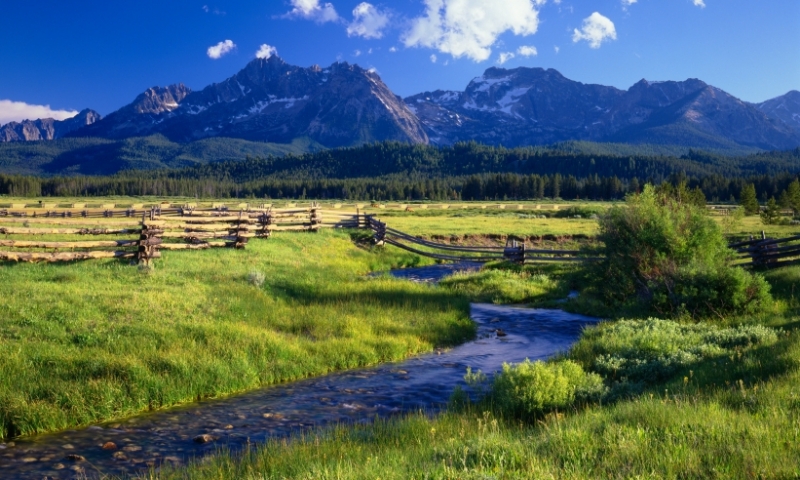Why Are Sawtooth Range Mountains So Prominent?
Geological Genesis: The Birth of Sawtooth Range
Sawtooth Range Mountains prominence

The Sawtooth Range Mountains, a stunning and rugged mountain range located in the western United States. Have captured the hearts and imaginations of adventurers, hikers, and nature enthusiasts for generations. Rising sharply from the valleys and valleys of Idaho. These majestic peaks stand as a testament to the geological forces that have shaped our planet over millions of years. In this blog post, we will delve into the fascinating world of the Sawtooth Range Mountains and explore. Why they are so prominent in the realm of natural beauty and geological wonder.
Geological Formation
To understand why the Sawtooth Range Mountains are so prominent, we must first delve into their geological origins. The Sawtooth Range is part of the Rocky Mountains. One of the most extensive and awe-inspiring mountain systems in the world. The Rocky Mountains, including the Sawtooth Range. Were formed through the tectonic collision of the North American Plate and the Pacific Plate.
Plate Tectonics
Around 50 to 80 million years ago, during the Laramide Orogeny. Immense geological forces began to push and fold the Earth’s crust, resulting in the uplift of the Rocky Mountains. This massive tectonic collision caused the land to buckle and fold. Giving rise to the jagged peaks and rugged terrain that define the Sawtooth Range.
Igneous Intrusions
The Sawtooth Range is also distinguished by its numerous granite and gneiss formations. These rocks are the result of molten magma from deep within the Earth’s crust that intruded into the existing rock layers. Over time, erosion exposed these igneous intrusions, adding to the dramatic and distinctive appearance of the Sawtooth Mountains.
Erosion and Glacial Activity
Another crucial factor contributing to the prominence of the Sawtooth Range Mountains is the relentless force of erosion and the shaping influence of glaciers over thousands of years.
Glacial Erosion
During the Pleistocene Epoch, which began around 2.6 million years ago, massive glaciers covered the Sawtooth Range and surrounding areas. As these glaciers moved. They carved deep valleys and sculpted the mountains into their current jagged form. The U-shaped valleys, hanging cirques, and knife-edge ridges that define the Sawtooth Range are the legacy of this glacial activity
Water Erosion
Erosion by water, primarily through the action of rivers and streams, has continued to shape the Sawtooth Range over the eons. The fast-flowing waters have deepened canyons, exposed rock formations, and contributed to the rugged and dramatic landscape that we see today.
High Elevations and Prominent Peaks
One of the most striking characteristics of the Sawtooth Range is its elevation. The Sawtooths are home to numerous peaks exceeding 10,000 feet in height, with Thompson Peak, at 10,751 feet, being the highest. This impressive elevation plays a significant role in their prominence.
Snow-Capped Peaks
The high elevations of the Sawtooth Range ensure that many of its peaks remain snow-capped for a substantial portion of the year. The sight of snow-covered summits against the backdrop of azure skies adds to their visual prominence and allure, drawing mountaineers, photographers, and outdoor enthusiasts alike.
Dramatic Silhouettes
The Sawtooth Range is renowned for its striking silhouettes and rugged profiles. Many of its peaks, including McGown Peak, Mount Heyburn, and Horstmann Peak, boast sharp, jagged ridges and serrated summits. These dramatic features not only enhance their visual prominence but also challenge climbers and hikers seeking to conquer their summits.
Rich Biodiversity and Natural Beauty
Beyond their geological prominence, the Sawtooth Range Mountains are celebrated for their rich biodiversity and natural beauty.
Diverse Ecosystems
The varying elevations and microclimates found within the Sawtooth Range support a diverse range of ecosystems. From lush alpine meadows to dense coniferous forests and pristine lakes. The Sawtooths are a haven for wildlife and flora. Visitors can encounter diverse species, including black bears, mountain goats, and an array of birdlife.
Scenic Lakes and Waterfalls
Numerous glacial lakes and cascading waterfalls punctuate the landscape of the Sawtooth Range. Iconic destinations such as Sawtooth Lake, Alice Lake, and Baron Lakes offer breathtaking scenery. Making them popular destinations for backpackers and photographers seeking to capture the area’s natural beauty.
Conclusion
The Sawtooth Range Mountains, with their geological marvels, towering peaks, and breathtaking vistas, stand as a testament to the awe-inspiring forces that have shaped our planet over millions of years. From the ancient tectonic movements that birthed these rugged mountains to the glacial and erosional forces that continue to shape them. The Sawtooth Range is a living testament to the Earth’s dynamic history.
Their prominence is not only a result of their geological origins but also their continued influence on those who explore their rugged terrain. The Sawtooth Range Mountains offer a glimpse into the raw power of nature and serve as a reminder of the remarkable beauty and wonder. That can be found in the wild places of our world. For hikers, climbers, photographers, and anyone who seeks a deeper connection with nature. The Sawtooth Range is a destination of unparalleled splendor and significance.




